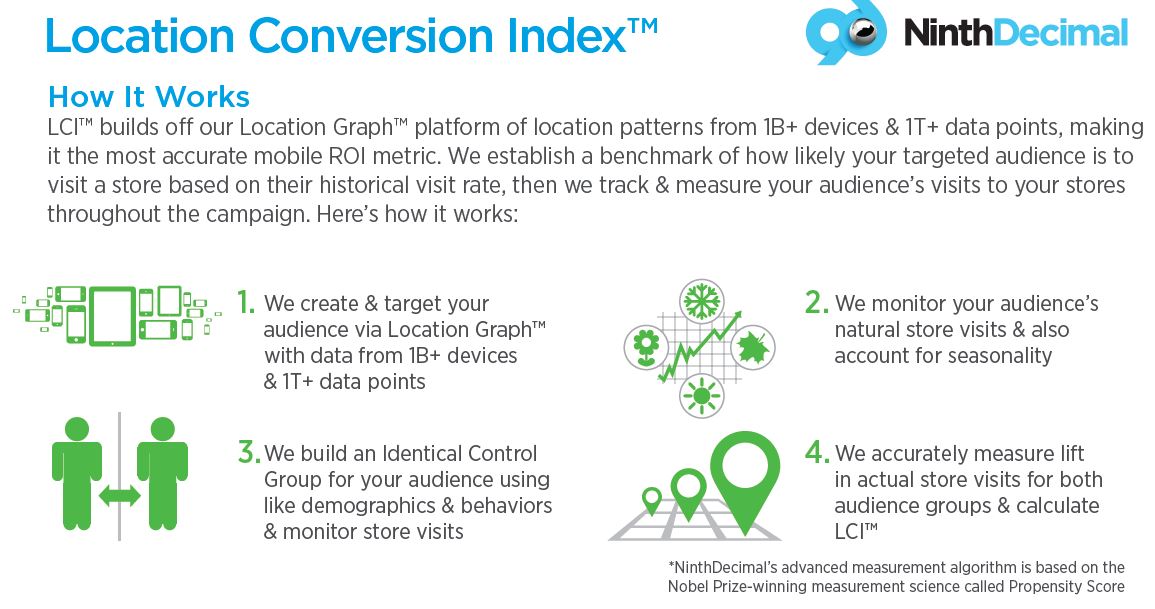Update 2/05/14: The graphic in this post has been updated to reflect recent data.
“Location is the real world cookie,” asserts David Staas, NinthDecimal’s president, “I think we were the first ones to say that.” Staas spoke to us recently on this blind spot marketers have when trying to bridge the virtual worlds of media to actual physical world outcomes of store traffic and actual purchases. It is the classic closed loop nirvana of trying to know exactly what marketing and advertising mix drives the ultimate consumer outcome. NinthDecimal derives its name from its key differentiator, a people centric lat/long precision down to four feet. Tile centric lat/long solutions often resolve geographic locations down to perhaps 100 meter tiles or grids. As Staas points out, that tile could include several different stores or locations that make for inconclusive results about where the person is.
Staas argues that the shift to mobile as the “first screen” has really caught marketers by surprise. But in this case, a good surprise for marketers. For example, companies like NinthDecimal can leverage the data storm spewing out of that mobile device in your pocket and a billion other such devices harvesting data such as (lat/long, usage, device ID, context). These mobile device data can be combined via data management platforms with other data (e.g., LiveRamp, Neustar, DataLogix, Blue Kai, Polk, Bizo) to generate multidimensional profiles of consumers on their journeys to purchase. Since the mobile device and third party data can tie both media exposure and real world locations, a full closed loop model can be derived to show that path to purchase and differentiate consumer groups exposed to a media campaign versus those not exposed.
Here’s how the NinthDecimal model works:
Staas says that while national marketers are the primary user group, this solution is being deployed to local. For example, Midas is using NinthDecimal in its network of 1,000 franchisees to not just target individuals but to customize the content and user experience on a local level.
In addition to the fast changing state of the technology and extremely capable data integrations driving the business model of bridging virtual and physical worlds, Staas expects the other driver in this segment of the local marketplace to be changes at agencies. He sees that while programmatic and direct used to be run by separate teams at agencies, increasingly these functions are being brought in-house and agencies will have their own programmatic experts. Agencies are putting together strategies for brand clients that now integrate programmatic plus direct marketing mixes.
__________
BIA/Kelsey will be releasing a client Insight Paper on programmatic this quarter and we’re hosting a SuperForum on programmatic at the BIA/Kelsey NATIONAL conference March 25-27 in Dallas. Hope to see you there.



This Post Has 0 Comments